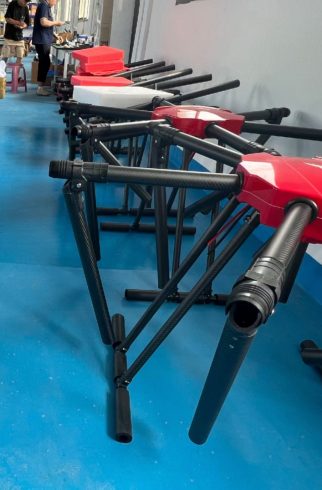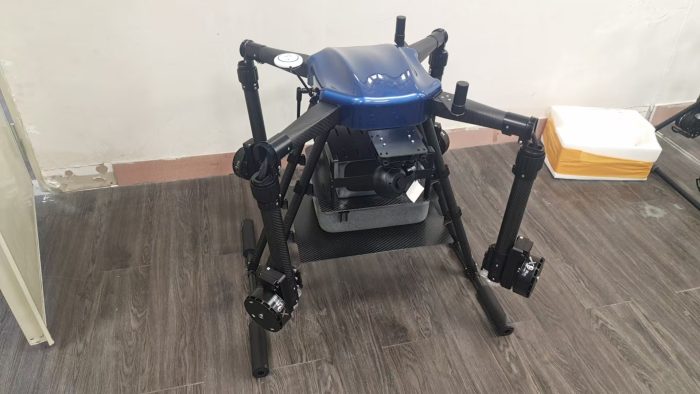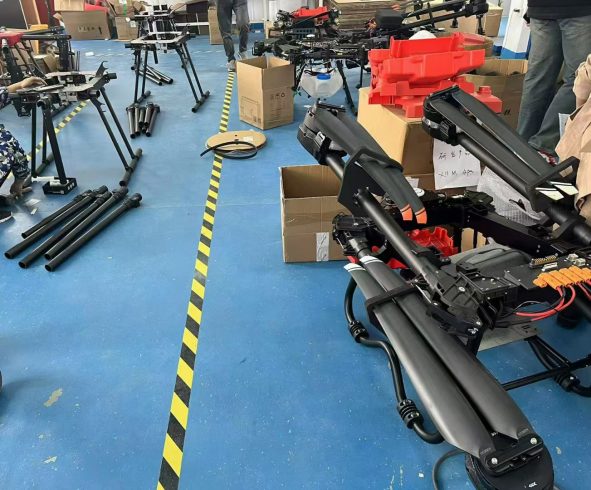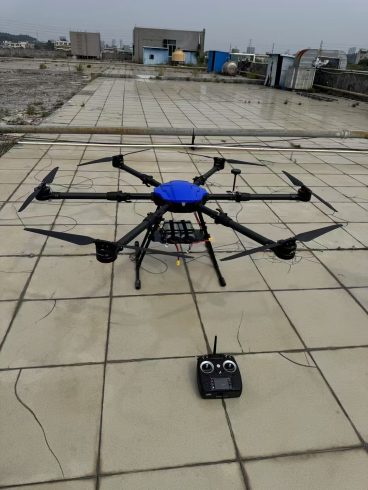![图片[1]-Eco-Friendly Spraying with UAVs: Pioneering Sustainable Agriculture-msoen](https://www.msoen.com/wp-content/uploads/2025/04/4e0da2d332214638-768x1024.jpg)
As global concerns over environmental degradation and resource scarcity escalate, the agricultural sector is under mounting pressure to adopt sustainable practices. Unmanned Aerial Vehicles (UAVs), or drones, are emerging as a cornerstone of eco-friendly farming, offering precision spraying solutions that minimize ecological harm while maximizing crop health. This article explores how UAV technology is driving a green revolution in agriculture, reducing chemical footprints, conserving resources, and fostering biodiversity.
The Environmental Toll of Conventional Spraying
Traditional crop spraying methods, such as tractor-mounted systems or manned aircraft, often result in:
- Chemical Overuse: Blanket applications waste 30–60% of pesticides and fertilizers, contaminating soil and waterways.
- Carbon Emissions: Heavy machinery and fossil-fuel-dependent aircraft contribute significantly to greenhouse gases.
- Biodiversity Loss: Drift from non-target spraying harms pollinators, aquatic life, and adjacent ecosystems.
- Soil Degradation: Repeated machinery passes compact soil, reducing fertility and water infiltration.
UAVs address these challenges by redefining spraying through precision, automation, and data-driven decision-making.
How Eco-Friendly UAV Spraying Works
- Precision Targeting with AI and Sensors
- Multispectral Imaging: UAVs map fields to identify pest hotspots, nutrient-deficient zones, or diseased plants, enabling hyper-localized spraying.
- AI-Powered Recognition: Machine learning algorithms distinguish weeds from crops, ensuring herbicides target only invasives.
- Ultra-Low Volume (ULV) Spraying
- Micro-Droplet Technology: Drones emit droplets as fine as 50 microns, achieving uniform coverage with 70–90% less liquid than conventional methods.
- Drift Reduction: Advanced nozzles and flight patterns keep droplets on target, even in light winds.
- Renewable Energy Integration
- Solar-Powered Drones: Emerging models use solar panels to extend flight times, slashing reliance on fossil fuels.
- Electric Propulsion: Battery-powered UAVs produce zero emissions during operation.
- Resource Conservation
- Water Savings: ULV spraying reduces water use by up to 90% compared to ground-based systems.
- Circular Practices: Drones apply organic or biodegradable chemicals that break down harmlessly, avoiding soil and water contamination.
Environmental Benefits of UAV Spraying
- Reduced Chemical Pollution
- Targeted Applications: Spraying only affected areas cuts pesticide and fertilizer use by 40–70%, protecting nearby ecosystems.
- Organic Compliance: Precision enables viable organic farming by minimizing cross-contamination from non-organic fields.
- Lower Carbon Footprint
- Emission-Free Operation: Electric drones eliminate CO2 emissions from traditional sprayers.
- Efficient Routing: Autonomous flight paths optimize energy use, reducing battery consumption.
- Soil and Water Preservation
- No Soil Compaction: Lightweight UAVs (2–20 kg) eliminate damage caused by heavy machinery.
- Runoff Prevention: Precise chemical placement stops excess nutrients from leaching into waterways.
- Biodiversity Protection
- Pollinator Safety: Reduced drift safeguards bees and butterflies critical to crop pollination.
- Habitat Preservation: Minimized chemical intrusion protects wetlands and wildlife corridors.
Case Study: A Sustainable Shift in Rice Farming
A 500-acre rice farm in Vietnam transitioned to drone spraying to combat pesticide overuse and water pollution. Results after one year:
- 65% Reduction in Pesticides: Targeted spraying of stem borer infestations saved 1,200 liters of chemicals.
- Water Usage Halved: ULV technology cut water needs from 150L/ha to 30L/ha.
- Certified Sustainability: Achieved Rainforest Alliance status, boosting export market value.
Overcoming Barriers to Adoption
While eco-friendly UAV spraying offers immense potential, challenges persist:
- High Initial Costs: Advanced drones with AI and multispectral sensors cost $15,000–$40,000.
- Regulatory Complexity: Permits for chemical application drones vary widely by country.
- Farmer Education: Training is critical to interpret data and optimize spray plans.
Solutions:
- Government subsidies for green farming tech.
- Leasing programs to lower upfront costs.
- Collaborative workshops between agronomists and drone operators.
Future Trends in Green UAV Technology
- Biodegradable Smart Chemicals: Drones deploy microencapsulated pesticides that activate only upon contact with pests.
- Carbon Credit Integration: Farmers earn credits for emission reductions achieved through drone spraying.
- AI Swarm Farming: Fleets of solar-powered drones autonomously manage large-scale sustainable farms.
- Soil Health Monitoring: Post-spraying, UAVs analyze soil microbiota to guide regenerative practices like cover cropping.
Steps to Implement Eco-Friendly UAV Spraying
- Assess Farm Needs: Match drone capacity (payload, battery life) to field size and crop type.
- Choose Sustainable Inputs: Opt for organic or bio-based chemicals compatible with precision spraying.
- Train Teams: Educate staff on drone operation, data analysis, and maintenance.
- Monitor and Adapt: Use UAV-collected data to refine spray schedules and input usage seasonally.
Conclusion
Eco-friendly spraying with UAVs is more than a technological upgrade—it’s a paradigm shift toward regenerative agriculture. By replacing wasteful, polluting practices with precision and intelligence, drones empower farmers to nourish crops without plundering the planet. As climate change and resource scarcity intensify, adopting UAV technology isn’t just an option; it’s an ecological imperative.
From protecting pollinators to slashing carbon emissions, UAVs are proving that sustainability and productivity can thrive together. For farmers ready to embrace this future, the tools for green transformation are already airborne.












暂无评论内容